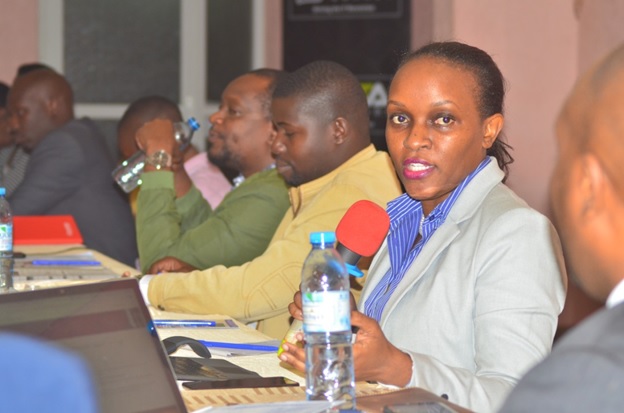Government authorities and ministries have kicked off discussions as Uganda steps up preparations to roll out an integrated system to facilitate seamless data sharing, National Information Technology Authority – Uganda (NITA-U) said in a Monday statement, adding that the engagements are aimed at ensuring “smooth implementation of the project.”
According to the statement, a workshop has been organized to engage the respective entities on the on-going efforts towards the implementation of the Systems Integration Platform as well as discuss issues like Data Security, Change Management and Monitoring & Evaluation (M&E) as critical components of integration.
Officials that attended came from different organizations, including Uganda Revenue Authority, National Identification Registration Authority, and Uganda Bureau of Statistics, Uganda Police, Judiciary, and the Office of the Prime Minister.
Speaking at the workshop, Vivian Ddambya, director of Technical services at NITA-U explained how the delay to implement seamless data sharing is slowing down service provision.
“We are all here because the Government of Uganda has made a commendable effort in ensuring automation. However, many systems still operate in silos with limited data sharing and as such, causes a hindrance to Government in realizing the full potential of ICT in the social and economic transformation of the country. We are in the process integrate all MDA systems so that data can seamlessly be shared across Government systems in a rational, secure, efficient and sustainable manner,” she said, according to the statement.
She added, calling for support of the project: “Today we are here to learn and share to enable the success of Government Systems integration. I hope at the end of these two days; we shall have ambassadors who will drive integration of systems within Government.”
The workshop comes three months after President Yoweri Museveni assented to the Data Protection and Privacy Act. The law provides the much-needed protection for personally identifiable information as Government moves to integrate systems and pushes for data sharing.
Why seamless data sharing
In 2018, NITA-U Executive Director James Saaka announced that government through the Authority was planning to integrate all government systems through the use of technology to achieve seamless data sharing.
He said that they were planning to ensure that instead of a Ugandan holding different cards such as NSSF, Driving Permit, national ID or medical card, they will create a technology where all this information is integrated into one card.
“The benefits are simplicity, a single citizens portal, a single user ID and seamless payments,” he explained.
According to the NITA-U boss, integration of government systems would curb wastage of resources caused by duplication.
In June of 2018, Stephen Kirenga, the head of public relations affairs at NITA-U, they had already started on the process of ensuring the use of one ID.
He added that the plan was to create a mobile ID that would create a more convenient method for citizens to access E-services as opposed to always moving with the physical ID card.
According to Saaka, Uganda is working with the government of Estonia to achieve the digital transition. Estonia has made advanced progress in the use of digital services, with at least 99 percent of public services available online. He adds that to ensure the security of the data system, the ministry of ICT presented the Data Protection and Privacy Bill to Parliament recently.
Related:
MTN launches airtime top-up through WhatsApp
Rwanda launches satellite to boost internet access in rural schools

